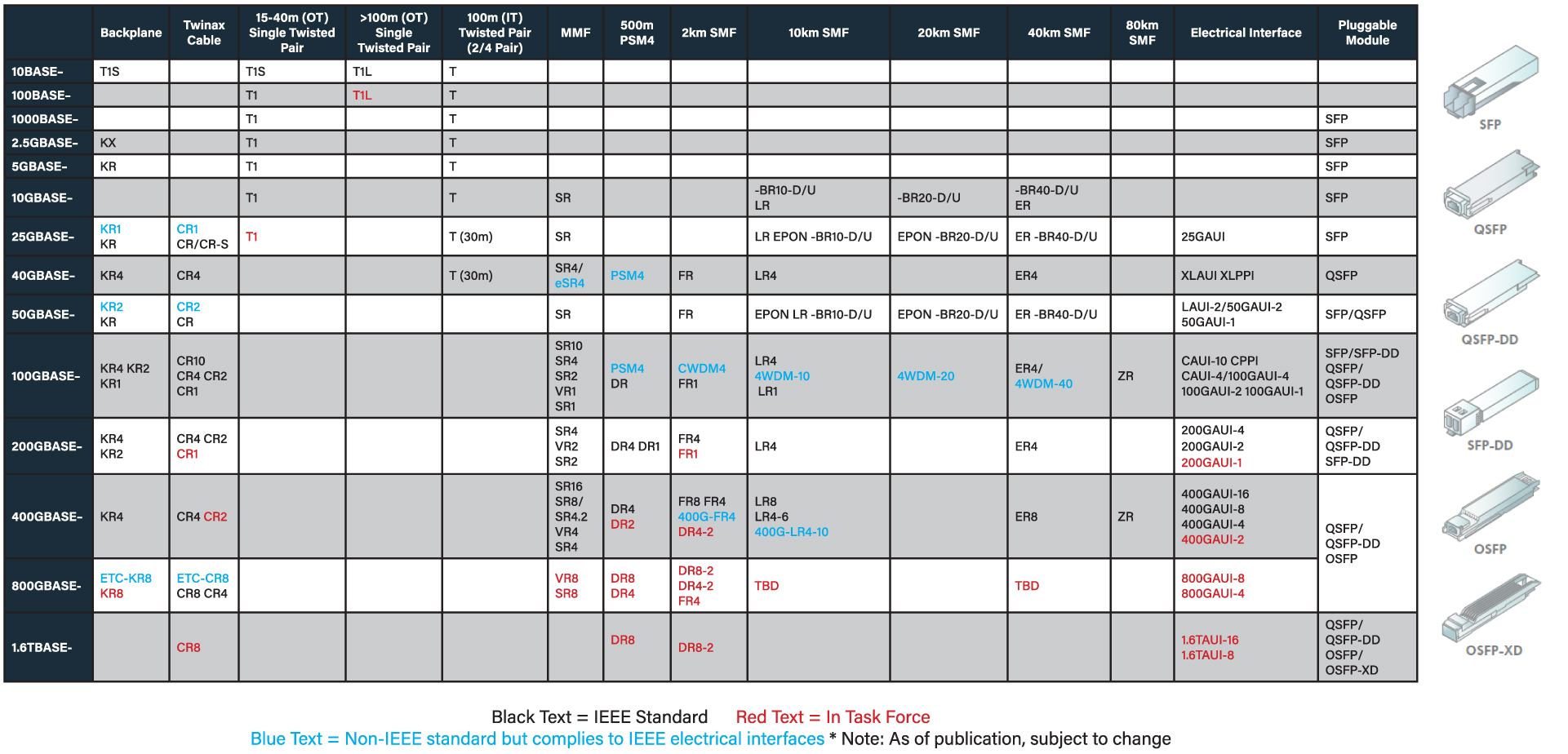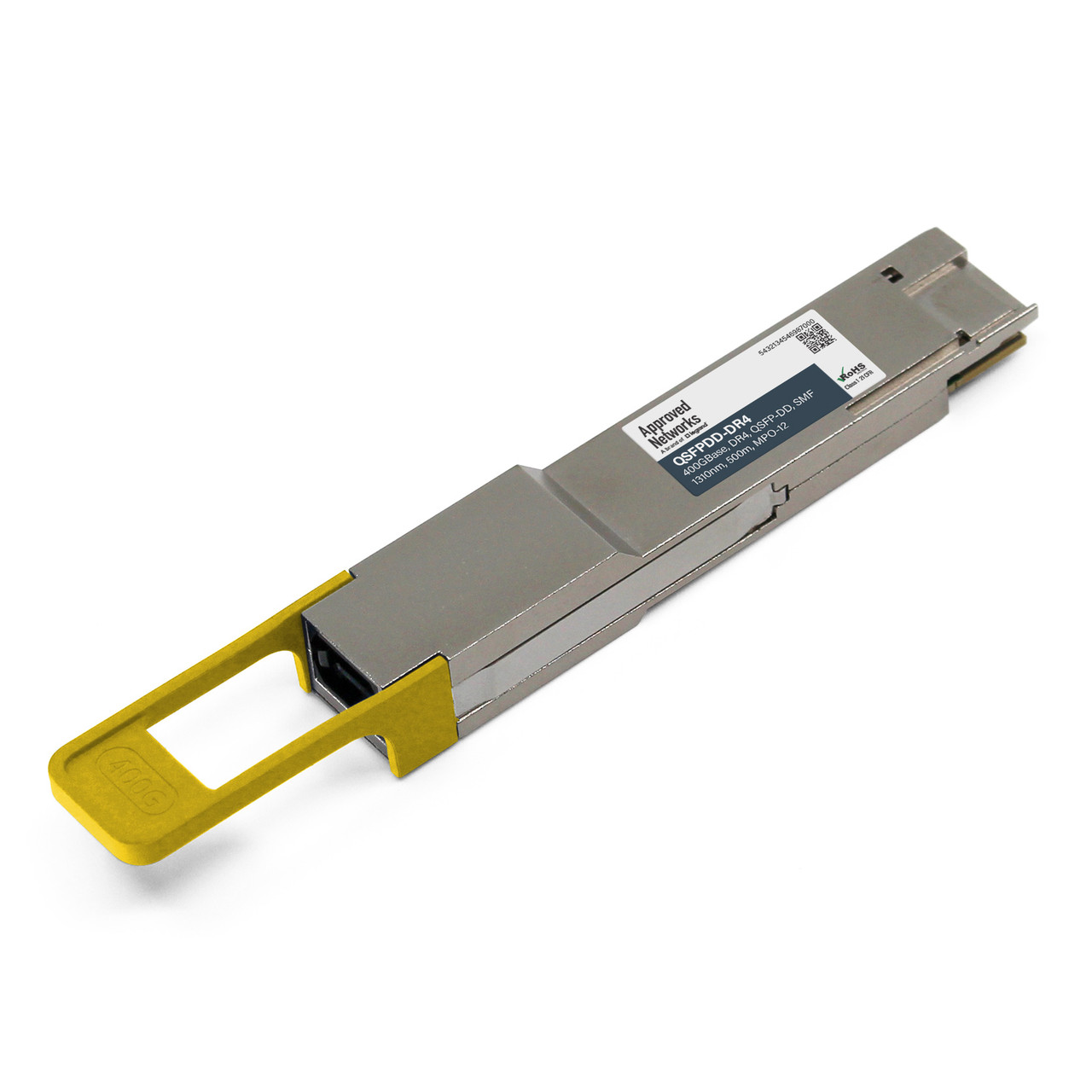Move to Single-mode Fiber for a Brighter Future
Posted by Kevin Kearney on Dec 1, 2023

Sometimes, if you need to determine where you are going, it helps to look where you have been. Ethernet is now 50 Years old. I have been thinking about where we've been and the changes made in data communications over the years. The only constant is indeed change, both in life and in technology. I began in the Telecom Industry in 1996 (a mere 23 years after Ethernet was invented).
From 100Mbps to 100Gbps
In 1996, we still used 62.5/125 OM1 Multi-mode Fiber and 100Mbps in the backbone. We could achieve a 2KM distance with 100BaseFX. The IEEE released 1Gbps a couple of years later in 1998 and we moved to Gigabit backbones and were able to reach 275 Meters on 62.5/125 OM1. We could go double that distance (550M) using the smaller core OM2 50/125 fiber.
When 10Gbps Ethernet was introduced in 2002, the multi-mode transceivers changed from LED to low-powered laser transmitters called VCSELs. This required manufacturers to release a new laser-optimized multi-mode fiber (LOMMF). OM3 was introduced in 2003 to support 10Gbps up to 300 Meters. (Makes sense. OM3=300M). Five Years later, OM4 Multi-mode was introduced. OM4 kept 10Gbps up to 400M. (That makes sense, too. OM4=400M).
In 2010, 40Gbps and 100Gbps were released by the IEEE (802.3ba), and we began to use the MPO Transceivers 40G-SR4 with 4 -10G Laser transmitters and 4- 10G Receivers. 100G-SR10 transmission required 10-10G Transmitters and ten receivers. It is called Parallel Transmission because multiple fibers in parallel were used to carry 10G Signals. Distances of 100M (OM3) and 150M (OM4) are supported. Then, in 2015, the IEEE released 100G-SR4 (802.3bm). This reduced the Fibers required to 4 in each direction carrying 25Gbps.
Introducing Multiplexing and Faster Speeds
In 2016, the SWDM4 transceivers were released. SWDM stands for Short Wavelength Division Multiplexing, allowing LC Duplex Transceivers to be used for 40G and 100G transmission. The transmitters operated at 4 Wavelengths (850nm, 880nm, 910nm& 940nm). All four wavelengths are multiplexed and sent over 1 Fiber in each direction. The transceiver at the other end de-multiplexes these signals. While SWDM4 transceivers can be used on OM3 (70M) and OM4(100M), a new fiber was introduced called OM5 that was optimized for SWDM4 transceivers. Using OM5 and a pair of SWDM4 transceivers extended the transmission distance to 150 Meters.
At the end of 2017, the IEEE (802.3bs) released 200Gbps and 400Gbps Ethernet. Many that have Multi-mode cabling installed in their data centers had to decide. The standard supported 400GBase-SR8 requires a new MPO16 (8 Fibers @ 50Gbps for transmission and 8 Fibers@ 50Gbps for reception). Another option was 400GBase-SR4.2. This transceiver supports the standard MPO12 or MPO8 cable assemblies. (Using two wavelengths 850nm & 910nm over 4 Fibers. 4 Fibers X2 wavelengths @50Gbps). Distances supported are 70M(OM3), 100M (OM4), and 150M (OM5).
Single-Mode: The Fiber of the Future
You likely noticed that I have been focusing my historical view of Ethernet on Multi-mode transceivers and fiber. Since I began in the industry, I have always heard that Multi-mode is more cost-effective for enterprises and data centers. As we look toward our future of 800Gbps and 1.6 terabits per second, it's time to consider Single-mode. Did you know Single-mode fiber has always been less expensive than Multi-mode fiber? The price of transceivers was what made Single-mode so much more costly. These transceiver prices have been reduced a lot. While the Single-mode transceivers may still be a bit more expensive, there are a lot more options for SM transceivers covering distances from 500M (DR4), 2KM (DR4+ & FR4), and 10KM (LR4).

I have included the 2023 RoadMap from the Ethernet Alliance below. You'll find that there are still plans to support Multi-mode. Multi-mode is viable and excellent for existing installations, but Single-mode should be seriously considered for new buildings. I am not a fan of the term Future Proofing, but installing Single-mode today will provide the bandwidth today and headroom needed for tomorrow. The cost of upgrading your cabling infrastructure is significant, and we all want it to last as long as possible.
Please reach out to the Approved Networks team. We work with customers daily facing decisions like these. There's often no correct answer, so we can review the pros and cons to determine the best option for you. Whether Multi-mode or single transceivers, DACs, AOCs, or fiber infrastructure, we have the products and the people to support your decision.



